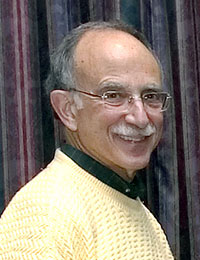 by Preston MacDougall April 03, 2008
Chemists talk about bond vibrations all the time. And beginning at the sophomore level we teach students how to use infrared spectroscopy to measure the frequencies of these vibrations as a way to probe the molecular structure of matter at the nanoscale.
But those weren't the vibrations he was talking about - he meant the "good, good, good" kind - and he was observing that there seemed to be a lack of them resonating across the campus during his two-day visit. The Beach Boys were referring specifically to sexual excitement, whereas my friend was referring to intellectual excitement, or "buzz" as we might have called it for a short while after buzzwords started taking control of our lexicon. I don't know what the "in" word is now, so I'm going to go with vibrations. At the time, I was a little offended. The truth hurts sometimes. While you don't need a GPS device to tell whether you are on the campus of Middle Tennessee State University or Stanford, there are pockets of good vibrations at MTSU, if you know where to look. The first Honors College in the state is one obvious place to look, but its new home was built after my friend's visit. And there are good vibrations emanating from leading faculty in every department on campus. For instance, I wish I had introduced my friend to Lon Nuell in the art department. Sadly, it's too late now, Lon died very unexpectedly of a stroke on Wednesday, March 12. He was described as a "real mensch" by his Rabbi, but to me Lon was a great example of a vibrating professor. In his 37-year career at MTSU,
Lon radiated intellectual energy in all directions: to the art
world as director of the Art
Gallery, back when it was in the Barn
and now in the newly renovated Todd Building; to his students
as a beloved professor of art education; to children in Murfreesboro's
schools as a veteran school board member; to a better-informed
state as a founding member of the Tennessee Holocaust Commission;
and last but not least to his faculty colleagues whom he served
during terms as Chair of the Art Department and President of
the Faculty Senate. It was typical of Lon's intellectual curiosity that our discussion of a small, blue, plastic work of art, that happened to remind me of a quaternary nitrogen atom in a molecular model kit, would end up with him trying to learn how to get a drop of mineral oil to beat like a heart. It wasn't just coffee talk.
Lon called me the next week, and asked me to send him an e-mail
with explicit instructions and any insight I could give him on
what is going at the molecular level. He wanted to share the
demonstration with his son, who majored in elementary education
here at MTSU. The apple doesn't fall far from the tree, and
the young Nuell sees no place for intellectual boundaries in
the classroom. Art and chemistry mix just as well as art and
history. Oil and water can form an emulsion if a surfactant is used, and that is what detergent does in your dishwasher. In this experiment it isn't exactly clear what the detergent is doing. You will, however, be amazed by what the drop starts doing. Once every second or so, it will contract and quickly spring back to its original size. Somehow, simultaneous interactions that the detergent has with the oil and the water, while it is slowly evaporating into the air and diffusing into the water, cause this curious vibration. I don't know if Lon ever got an oil drop throbbing, and if so what he thought about it. But I do know what I'll be thinking the next time I do this demonstration for students. I'll be thinking of Lon Nuell - a professor who vibrated with intellectual excitement.
E-mail your letters & opinions to editor@sitnews.us SitNews ©2008 Stories In The News Ketchikan, Alaska |
||
